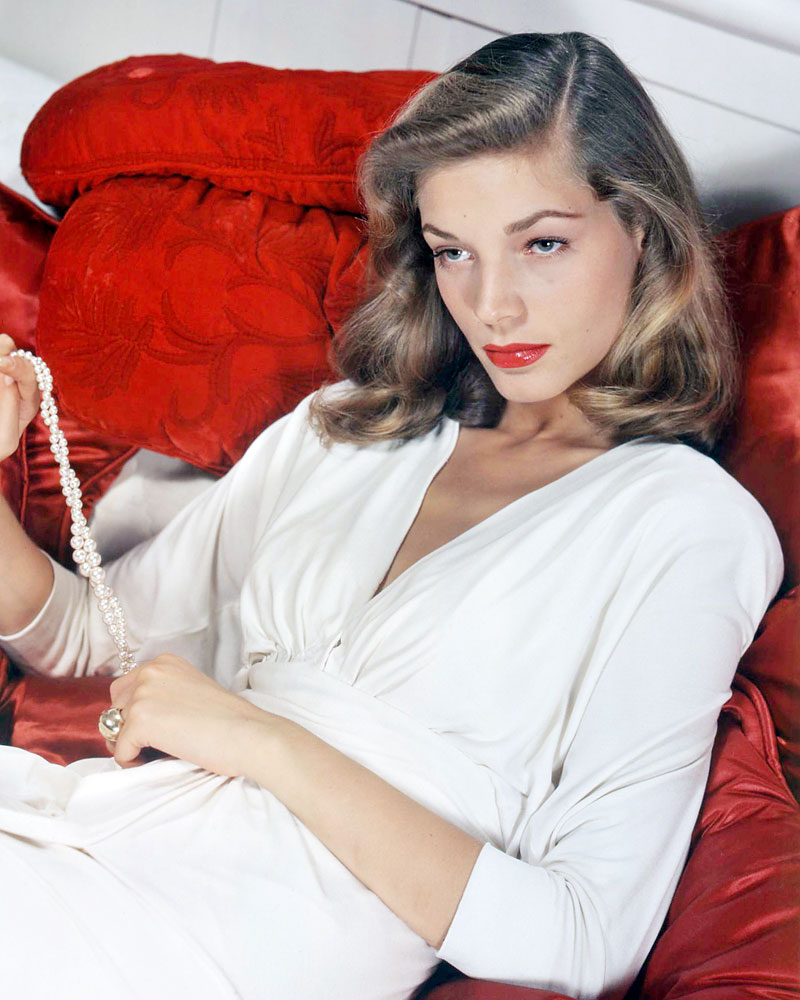
The passing of Lauren Bacall, she of The Look, her chin canted downward ever so slightly, at once coy and challenging, made me wistful for a time in Hollywood long bygone: the era of the Dame.
You would never call Audrey Hepburn one. Nor Meg Ryan nor even Meryl Streep: Too delicate, too flaky, too august. A Dame must be feminine and tough. She is glamorous and sensible. She is a guy’s gal and a girl’s girl. And we need her. Desperately.
An archetype born out of serious times that called for serious women, a Dame was seriously stunning, seriously funny, seriously game. Think Katherine Hepburn, resplendent in a floor-length gown, crowing, “I was born on the side of a hill!” as she limped along Cary Grant in broken heels.
The Dame is not to be confused with the Femme Fatale. While the latter is devious and destructive, the Dame is playful, whether she’s dancing by the fountain with Jimmy Stewart and a bottle of champagne (Miz Hepburn again in The Philadelphia Story) or showing the newsroom how it’s done (Rosalind Russell in His Girl Friday). Unlike the overt sexuality of Femmes like Rita Haworth and Ava Gardner, a Dame opted instead for subtlety. Sam Wasson, visiting professor of film at Wesleyan and author of 5th Ave 5 A.M.: Audrey Hepburn, Breakfast at Tiffany’s, and the Dawn of the Modern Woman, put it to me succinctly, “Glamour is sexuality under the cover of sophistication. Plain sexy has no cover.”
And don’t mistake the dame for a Broad—the Dame is a little smoother around the edges—tough but never rough—while the Broad has no problem dishing out vulgarities with the rest of the boys. Elaine Stritch? God bless that Broadway Broad’s whiskey-soaked soul.
The Dame had the glamour that the Broad would scoff at, not just in her clothes, though the clothes are nothing to sneeze at. Laura Brown, the executive editor of Harper’s Bazaar describes it as such: “It was a presence, a pragmatism of dressing that made frills and fluffs seem as superficial as they sound.” The Dame was lovely and streamlined; she’s yar—a word that can only be said by a Dame (again, The Philadelphia Story), or men who wear madras shorts.
As a California girl, I have always been entranced by the Dames of Howard Hawks films like The Big Sleep and Bringing Up Baby. They all seemed to come from places with names like Braintree and “Lake Winniepasomething.” They strode around in tweed suits and Grecian gowns with equal panache, and spoke in rumbly broad swaths of the Mid-Atlantic accent. Bacall’s famous purr still arched with class in her 1980’s commercials for decaffeinated coffee. Dames were like tomboy princesses of the Old World, but better because they were American.
The Dame wove repartee from mere wit. While a Lady might always have had a compact in her clutch, only a Dame had a clutch exit line – like Bacall’s most famous scene in which she gave Bogart whistling tips: “Just put your lips together and blow.”
A Dame is quick. A Dame is funny.
And now, a Dame is scarce.
She was a wartime phenomenon – the world was a scary place and she was the woman we needed: tough and sweet, feminine and brawny. Then the war ended. American audiences didn’t want brass, they wanted warmth and sweetness: Sandra Dee and Debbie Reynolds. With a wink and a smile, the Girl Next Door killed off the Dame; suddenly being a “cute girl” was valued over being a “handsome woman,” and we’re still living with this cultural shift. Manic Pixie, anyone?
Enough with the kooky ingénues! These are times that call for a grown-up woman who can play with the gentlemen, stand by her ladies, and be a true egalitarian. Let us have a Dame! How shall we summon her? With a whistle? How do we do that again…?
EA Hanks is a writer based in Los Angeles. She hopes more than anything to one day be described as “yar.”
More Must-Reads From TIME
- The 100 Most Influential People of 2024
- The Revolution of Yulia Navalnaya
- 6 Compliments That Land Every Time
- Stop Looking for Your Forever Home
- If You're Dating Right Now , You're Brave: Column
- The AI That Could Heal a Divided Internet
- Fallout Is a Brilliant Model for the Future of Video Game Adaptations
- Want Weekly Recs on What to Watch, Read, and More? Sign Up for Worth Your Time
Contact us at letters@time.com